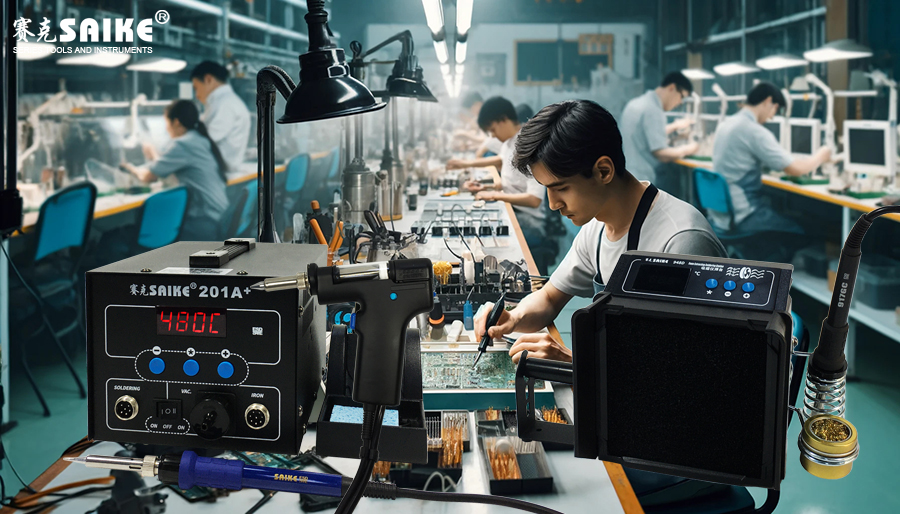
SK-YJ000HT-KP 100012
Soldering station welding is a precise welding technique widely used in the electronics industry, especially indispensable in the assembly and repair of electronic equipment. This welding method not only provides a high degree of control and accuracy but is also suitable for handling tiny and sensitive electronic components. This article will delve into the characteristics of soldering station welding and its applications in various fields.
I. Characteristics of Soldering Station Welding
1.Precise Temperature Control
Soldering stations are usually equipped with a temperature control system, allowing users to accurately set and adjust the soldering iron’s temperature. This feature is crucial for soldering sensitive electronic components, as excessively high or low temperatures can damage them.
2.Delicate Operation
Soldering irons equipped with soldering stations are typically small and easy to manipulate, enabling operators to work in tiny welding areas, ideal for complex electronic assembly and precise repair work.
3.Low Power Consumption
Compared to large welding equipment, soldering stations usually have lower power requirements. This makes soldering stations more economical and environmentally friendly while reducing operating costs.
4.Wide Applicability
Soldering stations can be used with various solders, including lead and lead-free solders, allowing users to choose suitable solders based on specific application needs.
II. Application Fields of Soldering Station Welding
1.Electronic Manufacturing
In the electronic manufacturing industry, soldering station welding is a key technique for assembling circuit boards and other electronic devices. It is used to solder various electronic components, such as resistors, capacitors, and integrated circuits, ensuring the functionality and reliability of electronic equipment.
2.Electronic Repair
Soldering station welding is equally important in electronic repair. Repair work often requires removing and replacing faulty electronic components, and soldering stations provide the precise temperature and maneuverability needed for these delicate operations.
3.Research, Development, and Prototyping
Research and development departments often rely on soldering stations to assemble and test prototype devices when developing new electronic products or prototypes. The precise control of soldering stations allows developers to quickly iterate designs and effectively debug electronic equipment.
4.Education and Training
In education, soldering stations are common tools in electronic engineering and technology-related courses. They are used for teaching and practical operations, helping students learn and master soldering skills.
5.Art and Craft
Soldering stations are also used in art and craft projects, especially in metal art and jewelry making. Artists and craftsmen use soldering stations to precisely weld small metal parts, creating intricate artworks.
III. Conclusion
Soldering station welding, with its precision, flexibility, and wide applicability, plays a crucial role in many industries. Whether in the high-tech electronic manufacturing industry or artistic creations requiring delicate handiwork, soldering stations are indispensable tools. With technological advancements and changing market demands, soldering station welding techniques continue to evolve, meeting higher operational precision and broader application requirements.


